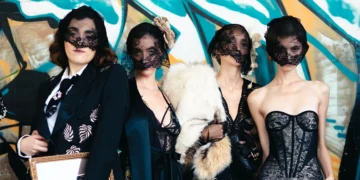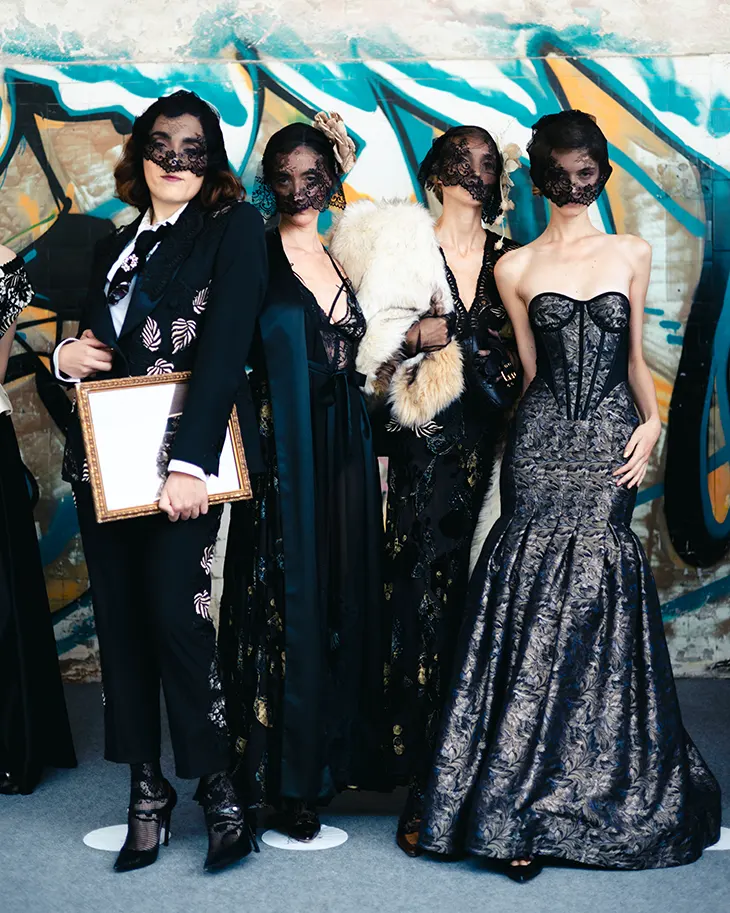
Antonio Marras presented his Spring Summer 2026 collection as an imagined travel diary set in Sardinia, with Alghero as the backdrop. The collection drew inspiration from literary figures connected to the island, including D.H. Lawrence, Frieda von Richthofen, Katherine Mansfield, and the Bloomsbury Group, reimagined as visitors discovering the island’s unique atmosphere. Photographer Sohom Das documented the atmosphere behind the scenes exclusively for DSCENE Magazine, capturing the moments leading up to the show.
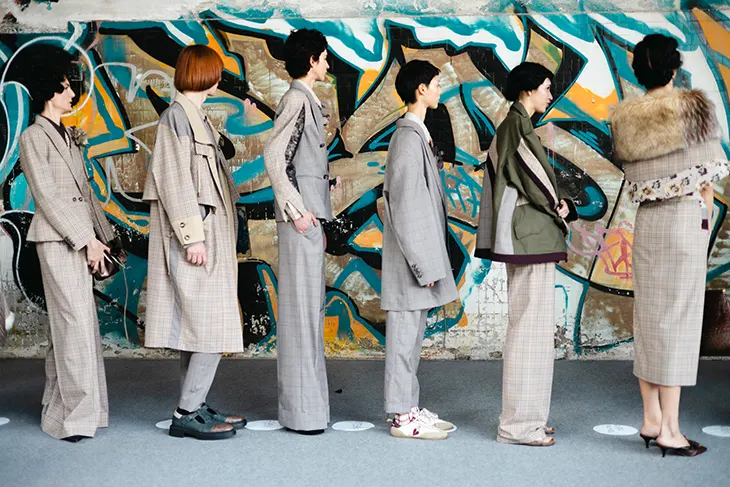
Marras merged their presence with Sardinian traditions, creating a collection where fabrics, colors, and silhouettes told the story. The color palette combined softness and depth, with shades of lilac, pink, chocolate, plum, copper, and bronze, complemented by ecru, cream, sand, and dust. These colors were applied to jacquard, damask, lace, denim, leather, and faux fur, enhanced by embroidery, patchwork, pleats, moulages, inlays, and draping. Patterns ranged from checks and stripes to florals and geometric designs.
Silhouettes included robes, cocktail dresses, pajama sets, tailored jackets, peacoats, and evening wear, all with a cinematic quality. Knitwear mimicked embroidery, while embroidery itself suggested watercolor effects. The men’s and women’s pieces shared fabrics but were interpreted differently to highlight variations in formality.
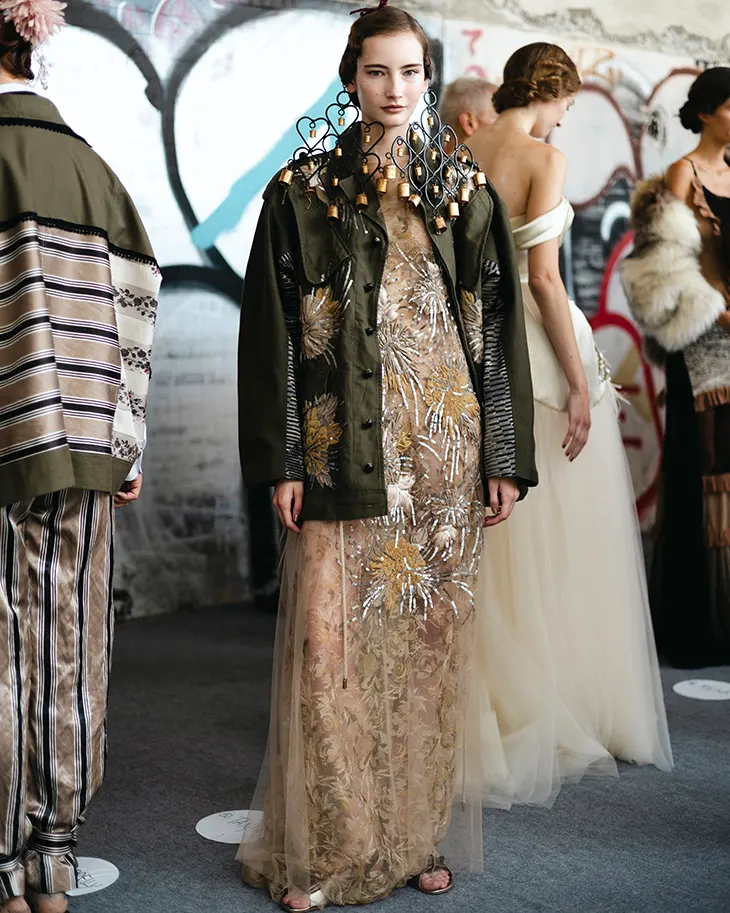
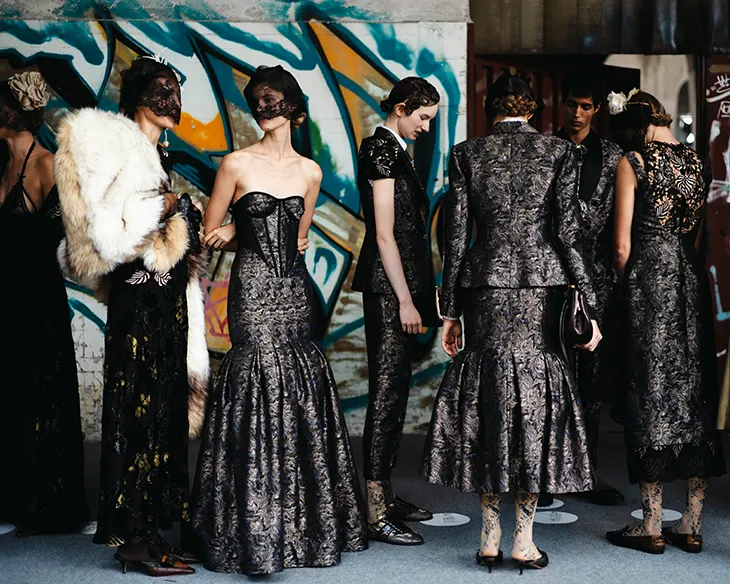
Literary references anchored Marras’s vision, with Lawrence’s 1921 stay in Sardinia as the foundation. The collection also reflected Frieda von Richthofen’s unconventional journey, Katherine Mansfield’s literary voice, and the Bloomsbury Group’s nonconformist ideas, portraying Alghero as a place of refuge and creativity.
Discover Antonio Marras Spring Summer 2026 Collection
Emphasizing Sardinian traditions, Marras showcased original local costumes, reinforcing their cultural significance. The inclusion of shepherd Giuseppe Ignazio Loi symbolized resistance against external pressures. The collection also explored Sardinia’s Mediterranean context, blending East and West to illustrate the cultural cross-pollination that shapes new traditions.

